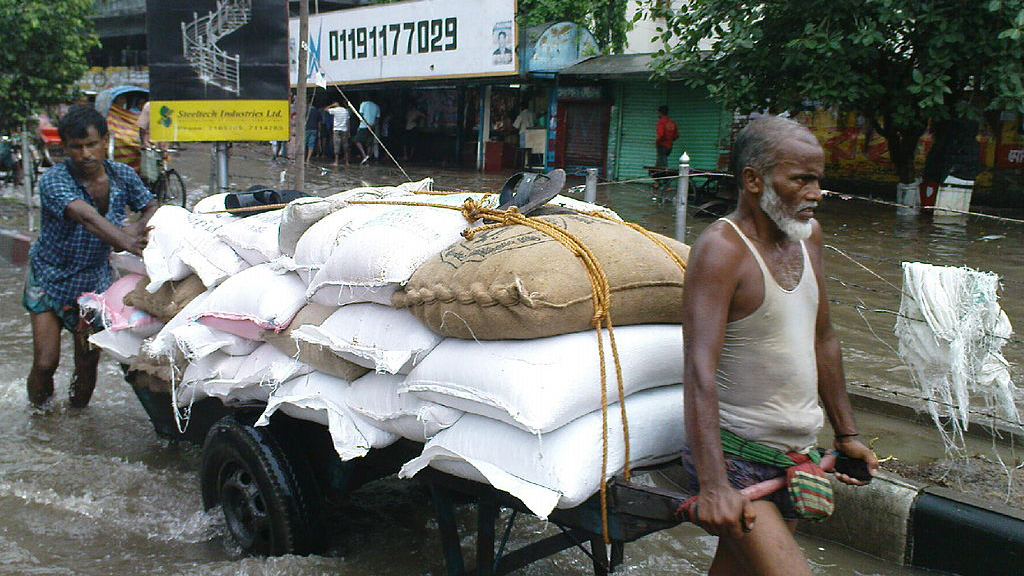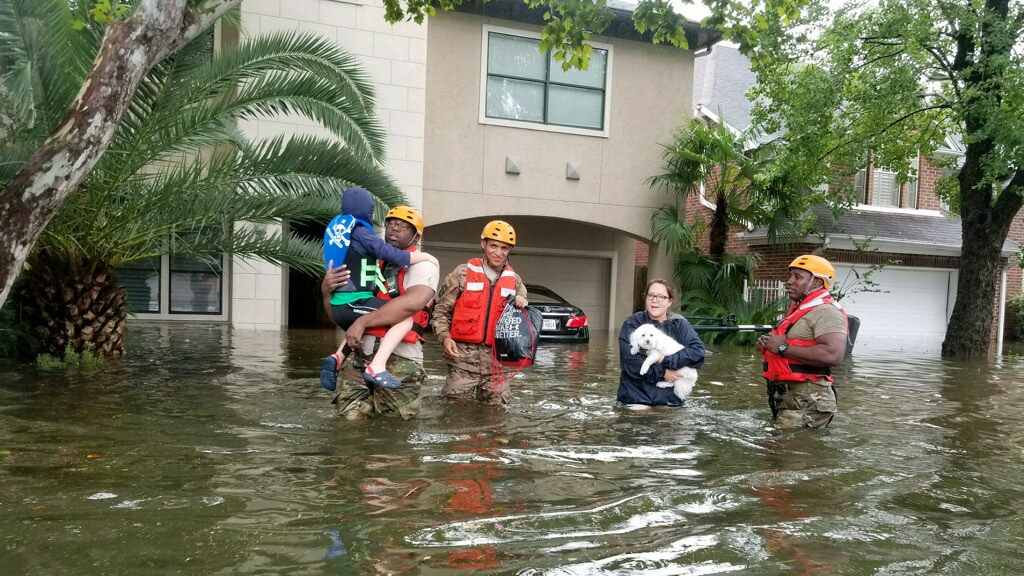By today, the floodwaters in Houston have begun to recede. Horrendous flooding from the massive rainfall from Hurricane Harvey has deluged the city with more than 50 inches of rain, flooding close to a third of Houston. Thirty people have been reported dead from the storm, and it is likely that more than 450,000 people will apply for federal assistance to recover from Harvey.
Much press coverage has focused, appropriately, on the relief effort. But there has been excellent reporting by Politico and others on an important contextual fact: Harvey was almost certainly made worse by climate change.
While it is almost impossible to attribute an individual event to climate change, the reality is that we live in a climate-altered world. Climate change has helped make the Gulf of Mexico warmer than usual, which gave energy to Harvey and helped the storm intensify. Climate change is also increasing the intensity of rainfall events, a phenomenon that seems particularly acute near the Gulf Coast. Harvey is the third “500-year” flood to hit Houston in three years, which should give us some indication that previous patterns of precipitation are now significantly altered.
But the past several weeks also saw another major flood event, as Bangladesh, India, and Nepal have been hit with massive monsoon rains. More than 1,000 people have died, and an estimated 41 million have been impacted. Dozens of cities have been impacted, including Dhaka, the capital of Bangladesh and home to 19 million people in the metropolitan area. While monsoonal flooding is common in South Asia, the amount of rainfall and the size of the flooding is quite unusual. Climate change has been making the wet periods of the year wetter in India and the dry periods drier, suggesting that these kinds of monsoonal floods in South Asia will be a more common occurrence.
These two very different death tolls should make everyone who sees them pause to reflect on why there were 30-fold more lives lost in South Asia. Some of the difference in impact likely has to do with population and area impacted. The monsoon affect the whole South Asian region, one of the most densely populated places on Earth (Vaux et al. 2012).
But some of the difference in the death toll has to do with the financial resources that different nations and communities can put toward planning to reduce risks from hazards like floods (Smit and Wandel 2006). Developed countries are on average able to build more and better infrastructure to manage risks, and they are able to plan and implement more effective disaster response and emergency services. Individual households in wealthier countries also have, on average, more resources and capacity to adapt when disaster strikes. The financial resources available to different communities vary greatly, which affects their vulnerability to climate change and its hazards (Field et al. 2014).

Climate change is increasing the flooding risks to cities around the world, and the United States and the European Union are responsible for more than half of cumulative CO2 emissions that are causing climate change. And yet communities in the United States and Europe have significant financial capacity to adapt to climate change, by altering infrastructure and planning for how to respond to disasters (Field et al. 2014). Conversely, India, Bangladesh, and Nepal have contributed less than 5% of cumulative CO2 emissions that are causing climate change, but communities in these countries have significantly less financial capacity to adapt to climate change, and a be more vulnerable to its ravages (Field et al. 2014).
To address this inequality, a core part of the global agreements on climate change has been the idea that the developed world will assist the developing world in adapting to climate change. In the 2010 meeting in Cancun, the developed countries pledged by 2020 to give $100 billion per year in additional climate financing to help developing countries in both mitigating and adapting to climate change. The problem is that many developed countries aren’t meeting their obligations. And recently, the United States indicated their intention to withdraw from the Paris Agreement on climate change, and reneged on $2 billion in commitments it had made to help developing countries address climate change.
In this moment of tragedy in Houston, let’s all send our goodwill and relief dollars to help those affected in Texas. But as we do, let’s also give some thought to those affected by flooding in Bangladesh, India, and Nepal.




Join the Discussion
1 comment